Tempura Matsui (New York, NY)
Tempura Matsui
222 E 39th St, New York, NY 10016
212-986-8885
www.tempuramatsui.com
Thu 10/19/2023, 05:25p-07:30p
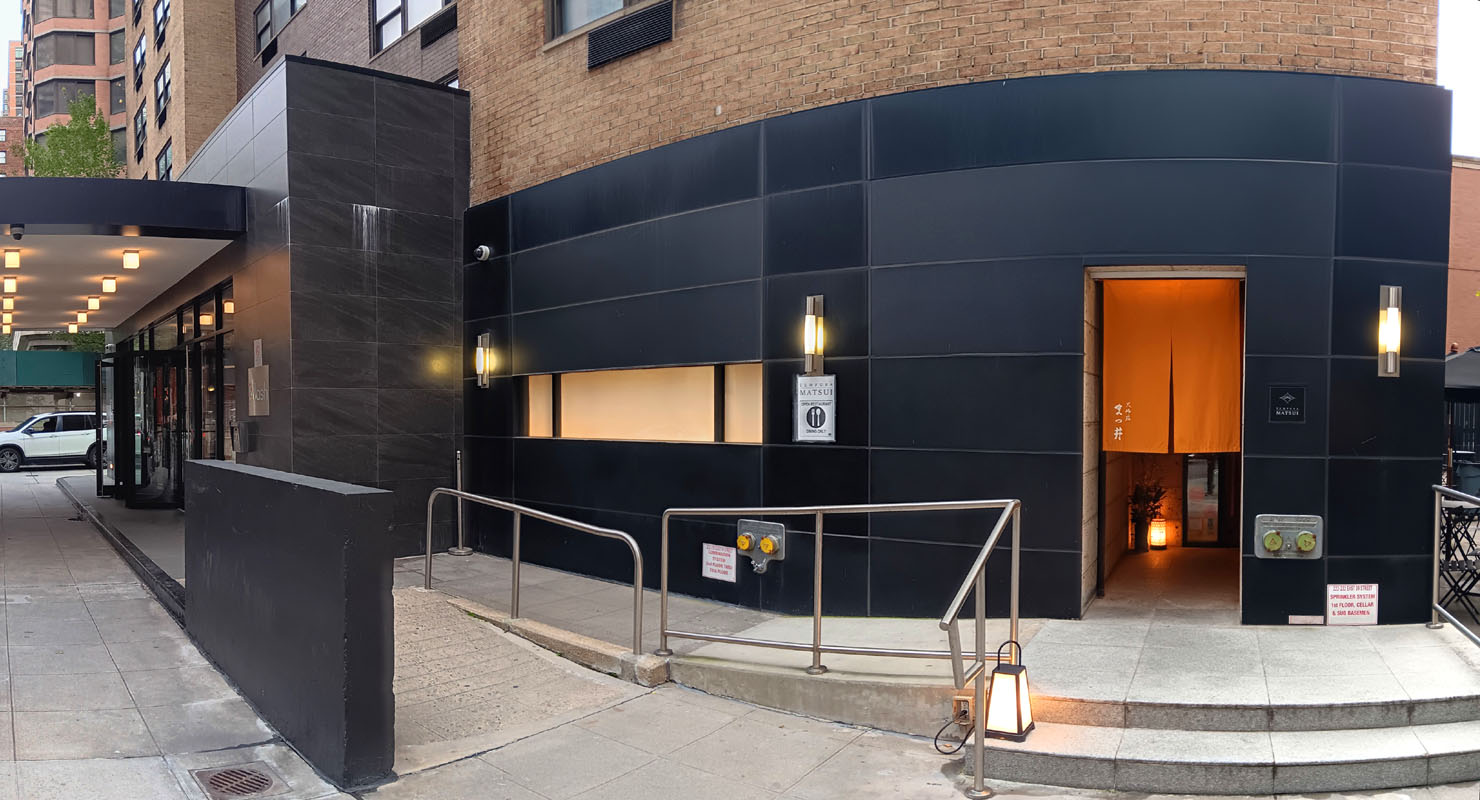
I had a stopover in NYC on my way back from my recent visit to England, and thus had time to partake in an early dinner in Manhattan. Given how I often lament the lack of tempura specialist restaurants in the US, I opted to check out Tempura Matsui (天婦羅 まつ井) in Murray Hill. Located on the ground floor of The Nash apartment building, the place opened back in 2015, and is actually the first and only Michelin-starred tempura spot in the country.
A bit of history: The story begins with the restaurant's namesake, Masao Matsui, a veteran tempura chef who got his start in the business in 1968, when he was 18. Throughout his career, he'd run a number of tempura joints in Japan, his most recent post being at the tempura bar at Kioi Nadaman, a restaurant at Hotel New Otani in Tokyo. Given his four decades-plus in the industry, he had hung up his hat, but was lured out of retirement at the age of 65 by Hisami Mitsumori, founder of the Ootoya group, a company that runs hundreds of eateries across Japan and other parts of Asia, and which broke into the American market in 2012.
The Chef was reportedly quite excited about the prospect of being in New York, and thus, Tempura Matsui ended up grand-opening on July 14th, 2015 as the fifth Ootoya outpost in the US, though regrettably, Mitsumori died suddenly shortly after the debut. Just a few weeks later, Matsui was forced to return to Japan due to health reasons, leaving the eatery in the hands of his lieutenant, Shin Kato, another Nadaman alum who'd been cooking since the age of 18. Kato was able to keep things going at a high level, and the restaurant was awarded a Michelin star at the end of September 2015, which has been maintained ever since. Matsui returned to NYC briefly later that year, but his health continued to deteriorate due to cancer, and sadly, he passed away in Japan on February 7th, 2016.
In May 2016, Kiyoshi Chikano was named head chef of Tempura Matsui, a role he ostensibly shared with Kato, though Kato appeared to have decamped just months later. Boasting over 30 years in the biz, Chikano started his career at a sushi-ya in Hokkaido before making his way to Zakuro in Tokyo, where he learned to run a tempura counter. He relocated to the US to work with Matsui, but recently left the restaurant, within the past year or so I believe. The new head chef is Koichi Endo (b. 1970), who, by the way, is not related to the Tempura Endo founder despite their identical names. Endo was also part of the opening team, and was apparently the last person to be trained by Matsui. After a stint at J-Spec Wagyu Dining/Esora Omakase in 2021, he's since returned to take charge here.
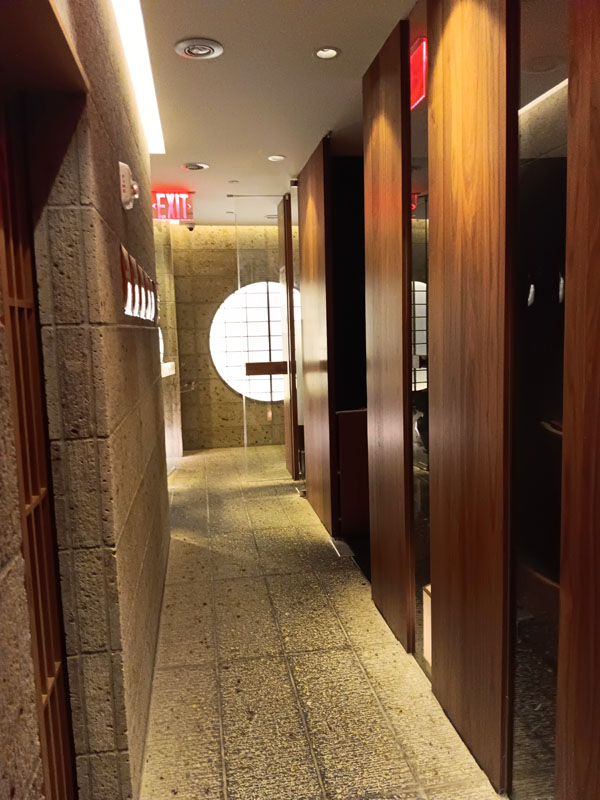
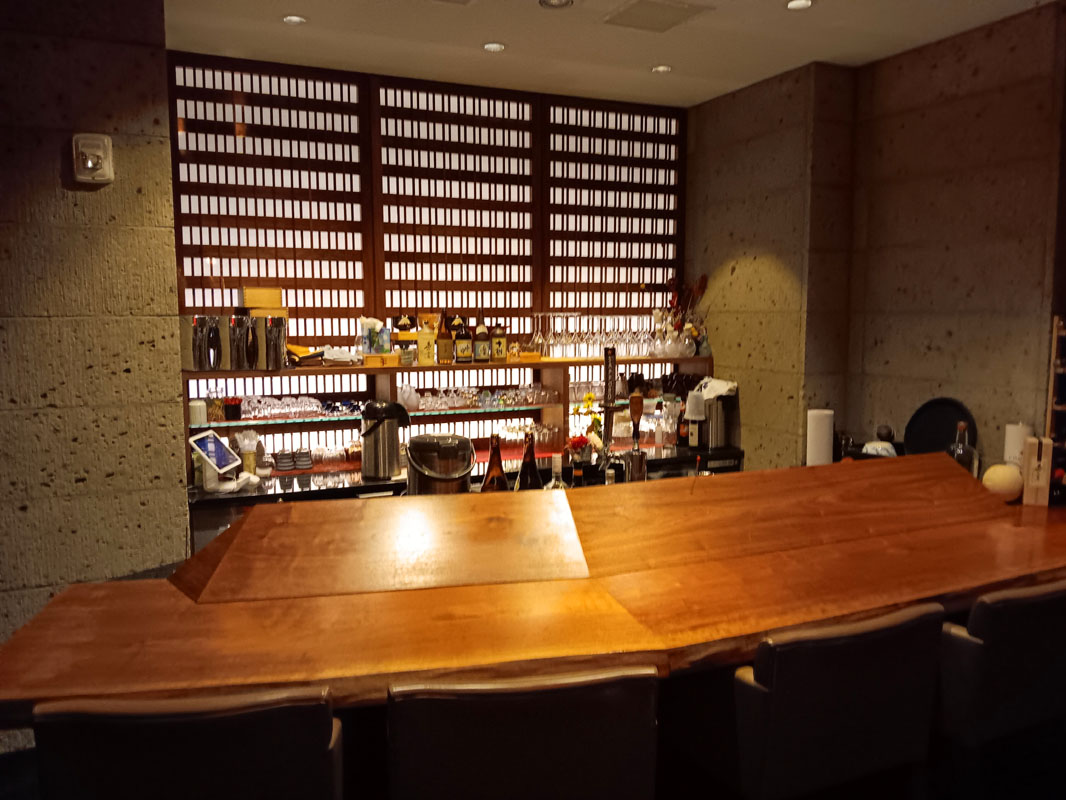
Here we see the hallway leading from the entrance, as well as a small bar area, which is apparently used for pre-dinner imbibing.
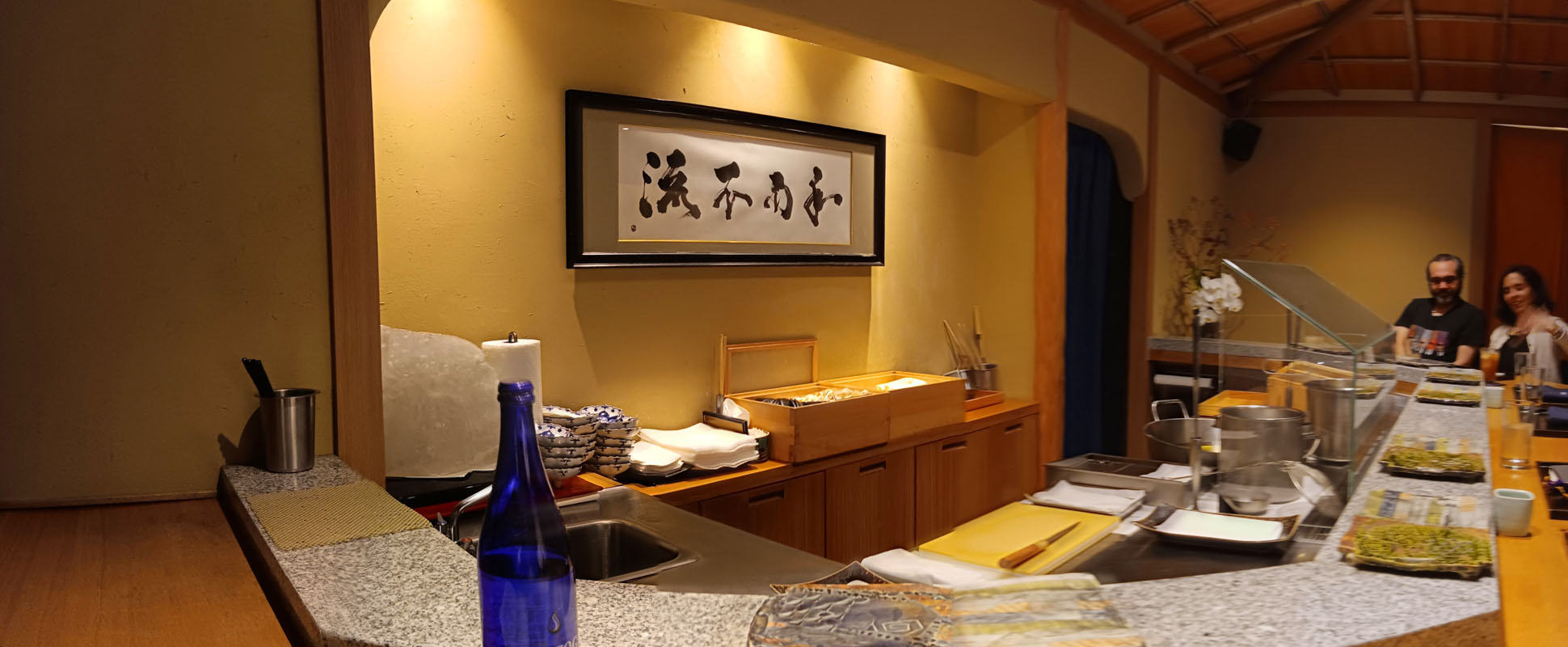
The restaurant offers two tables for four and one table for two, but you'll want to grab a spot at the nine-seater tempura counter.
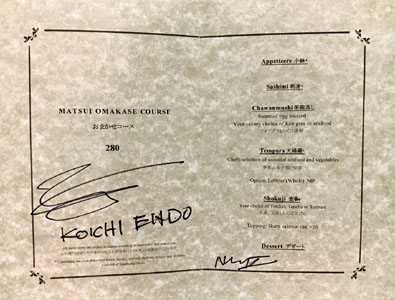
Though the restaurant used to offer various levels of omakase and à la carte ordering, that appears to no longer be the case, as the $280 "Matsui Omakase Course" was the only option given to me. Click for a larger version.
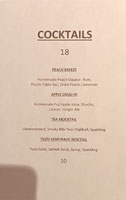

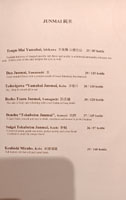
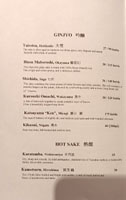
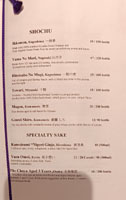
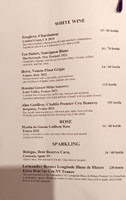
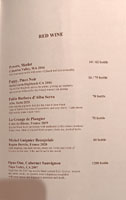
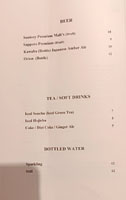
Beverage choices include cocktails, sake, shochu, wine, and beer. Click for larger versions.
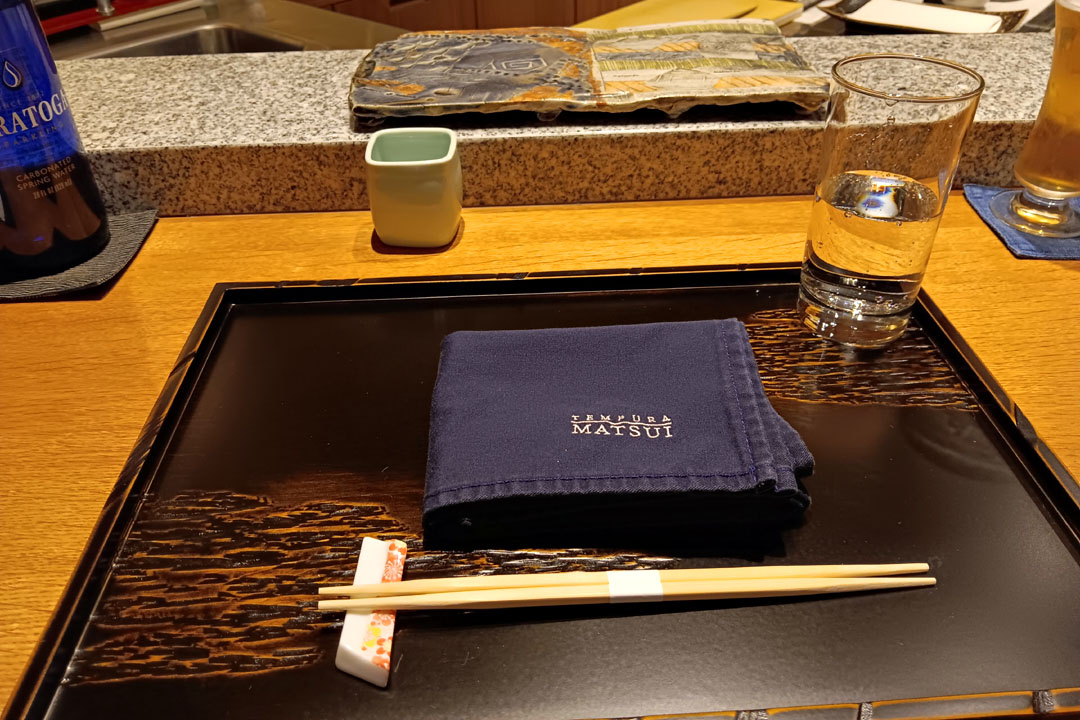
The place setting was about par for the course.
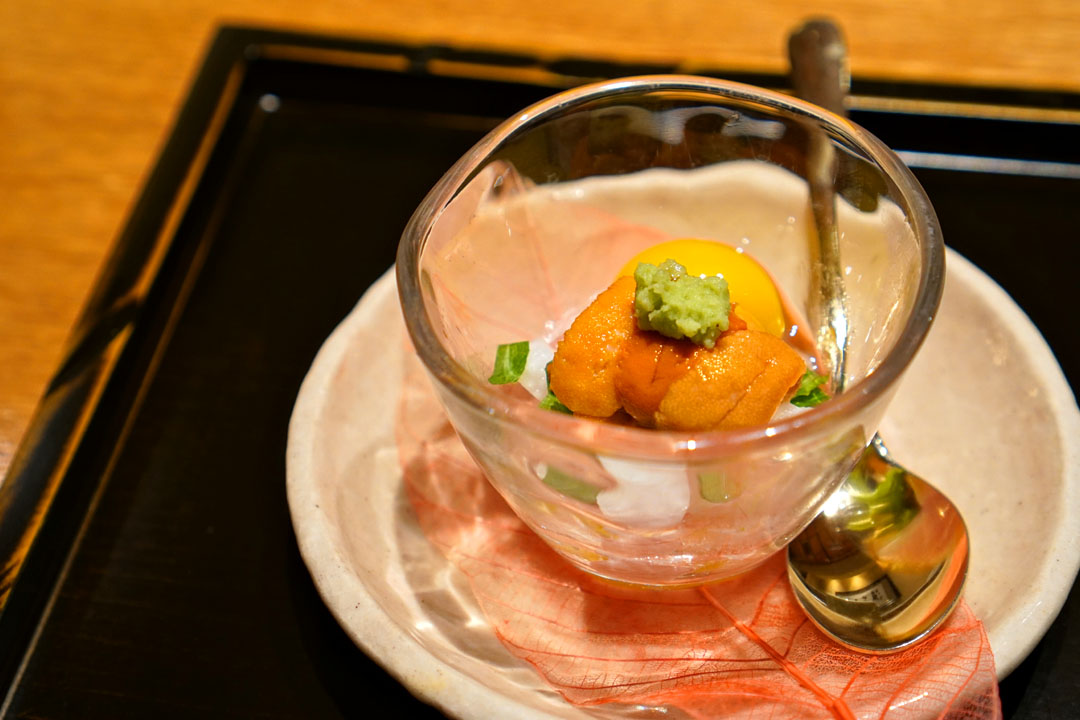
1: 雲丹シューター Uni Shooter
My first kobachi (小鉢) course brought creamy tongues of Hokkaido sea urchin, paired with lush quail egg and fatty cuts of tuna belly. At the same time, both the wasabi and the bits of yamaimo kept things in check.
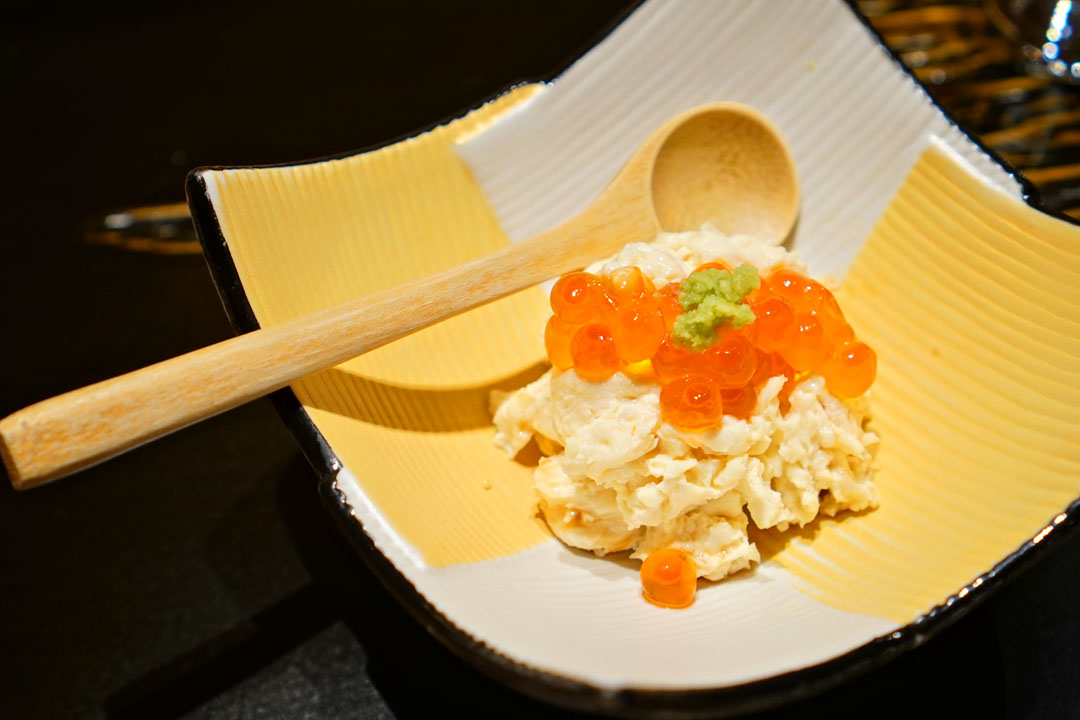
2: ゆば Yuba
Tofu skin arrived well-textured, its mild taste meshing easily with the savoriness of salmon roe and the sting of wasabi.
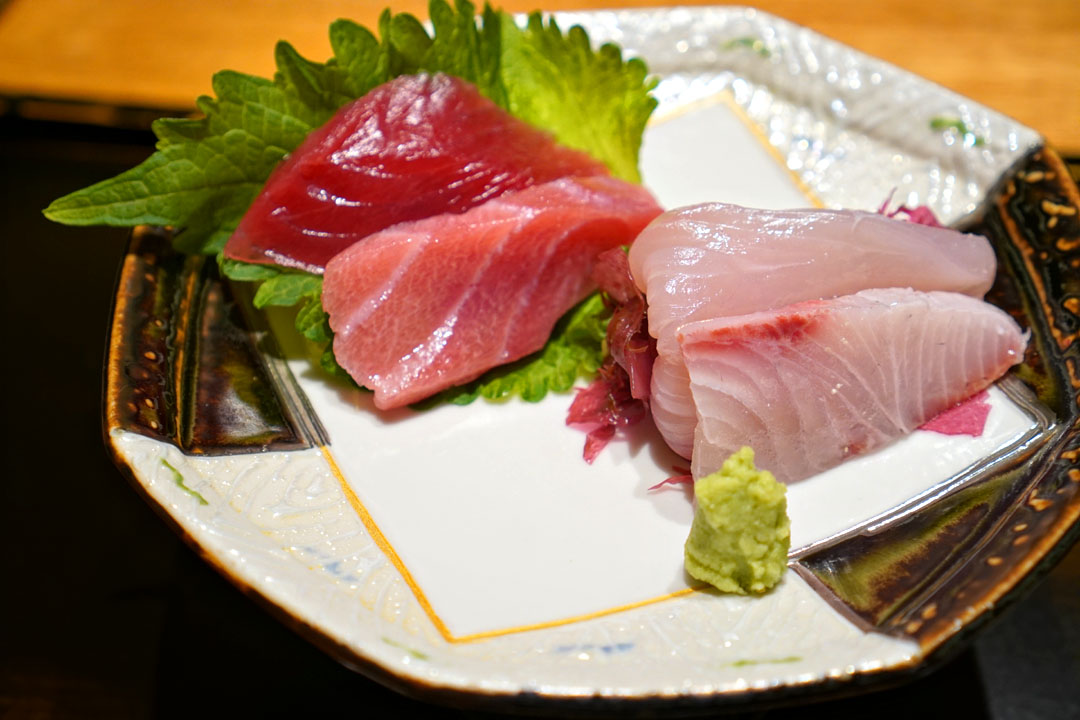
3: 刺身 Sashimi
The requisite sashimi course was up next. I began with the amberjack, a sticky, creamy, subtly-flavored fish that went great with both the wasabi and seaweed. I then moved on to a ruby-hued, classically savory shard of tuna, and ended with a properly fatty cut of toro, which really called for the wasabi.
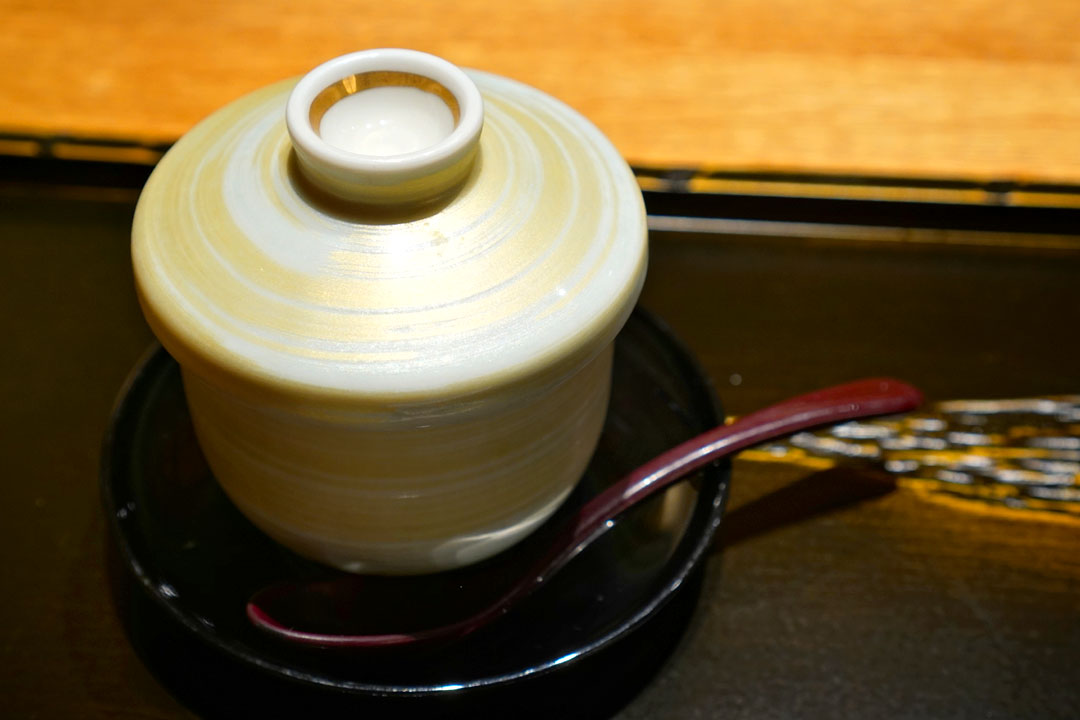
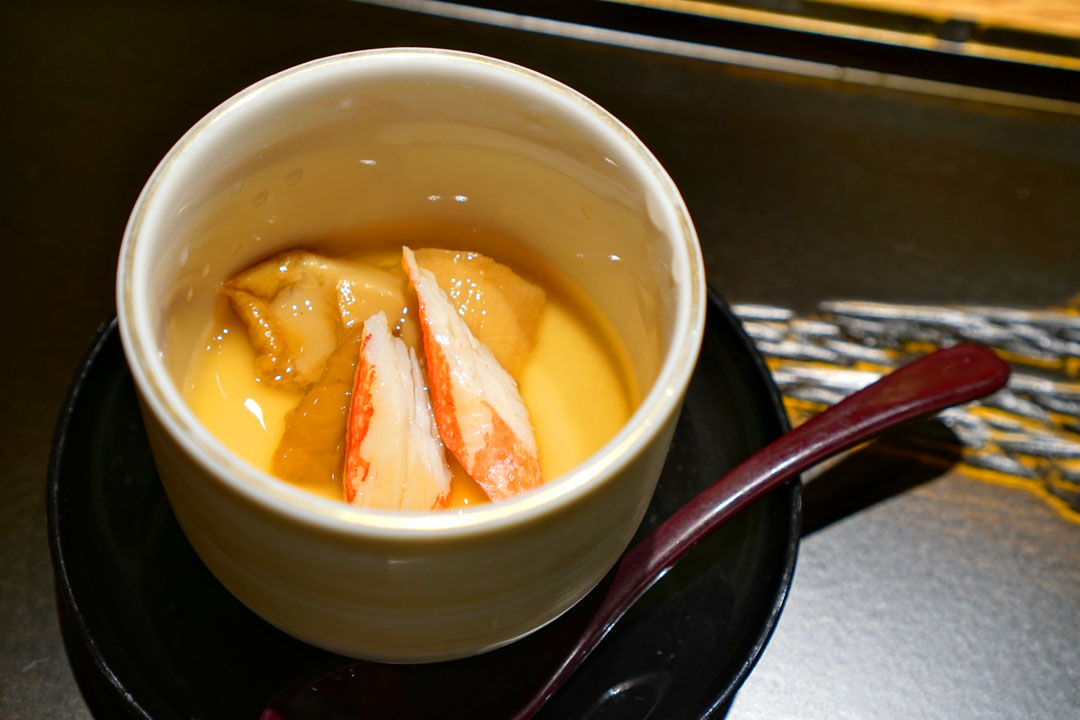
4: 茶碗蒸し Chawanmushi
For my chawanmushi, I was offered a choice between foie gras or seafood. Though I opted for the former, I actually didn't taste much from the liver. That being said, the dish overall was cozy and apropos for the season, the porcini and snow crab making themselves quite known.
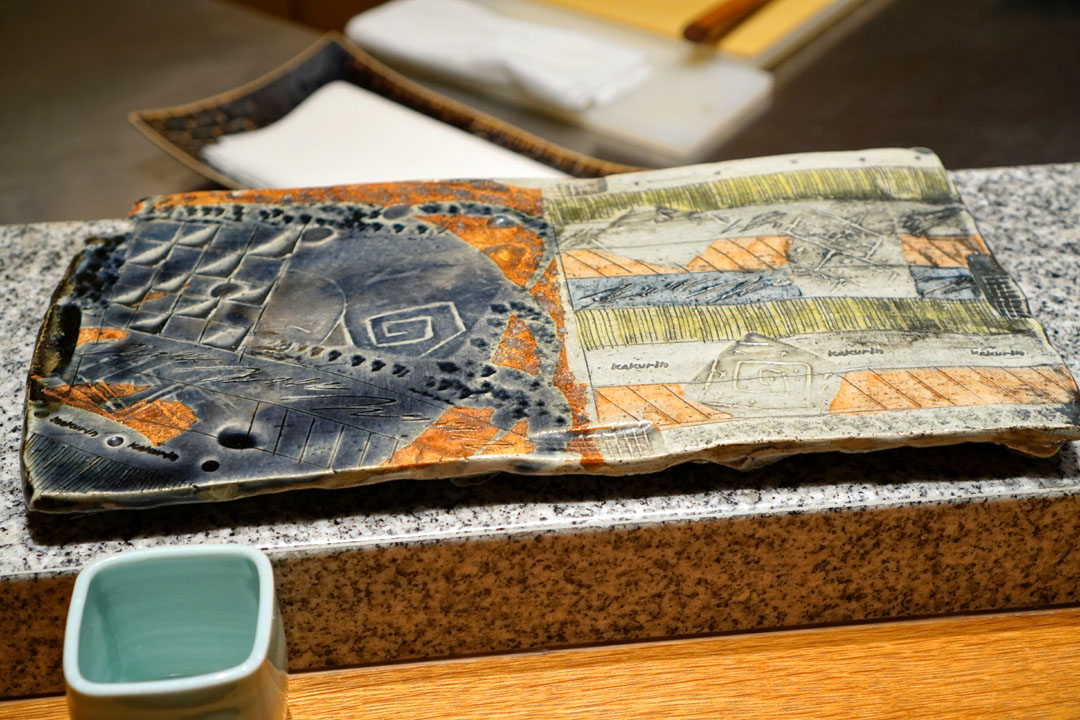
It was now time for the parade of tempura to begin. The various pieces mostly arrived on the plate above, sourced from a producer called Kakurin (カク林製陶所), based out of Toki in Gifu Prefecture.
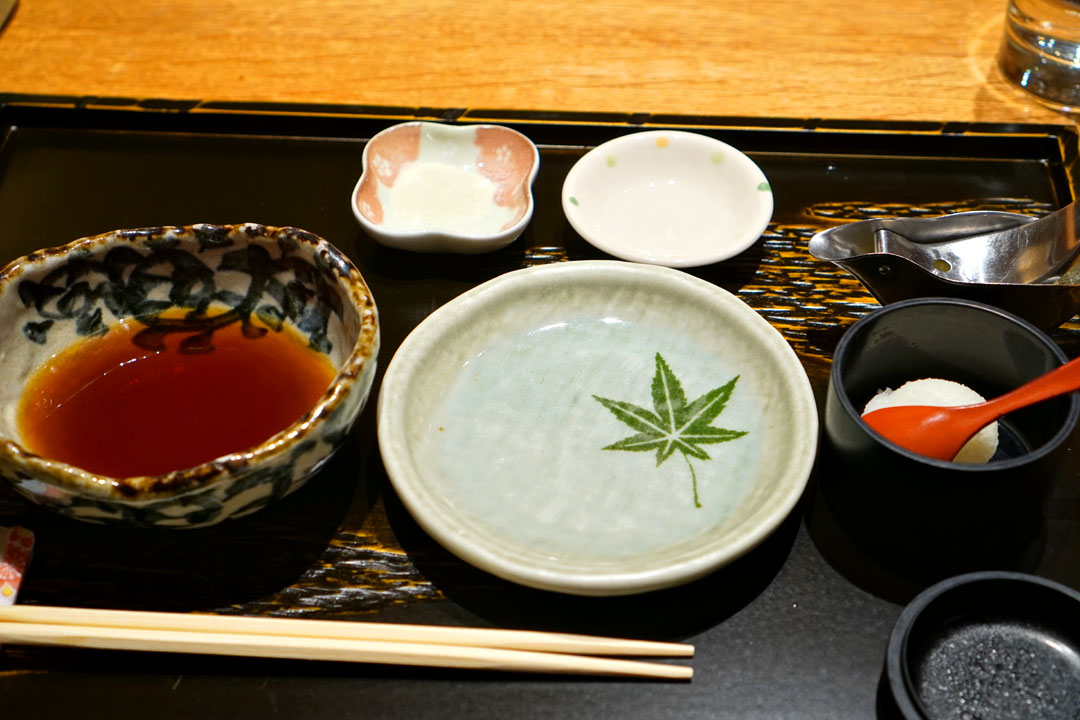
Accoutrements for my tempura included the compulsory tentsuyu sauce with grated daikon, as well as seaweed salt and lemon. I was instructed to use a particular condiment for each course, which I've noted below in lenticular brackets.
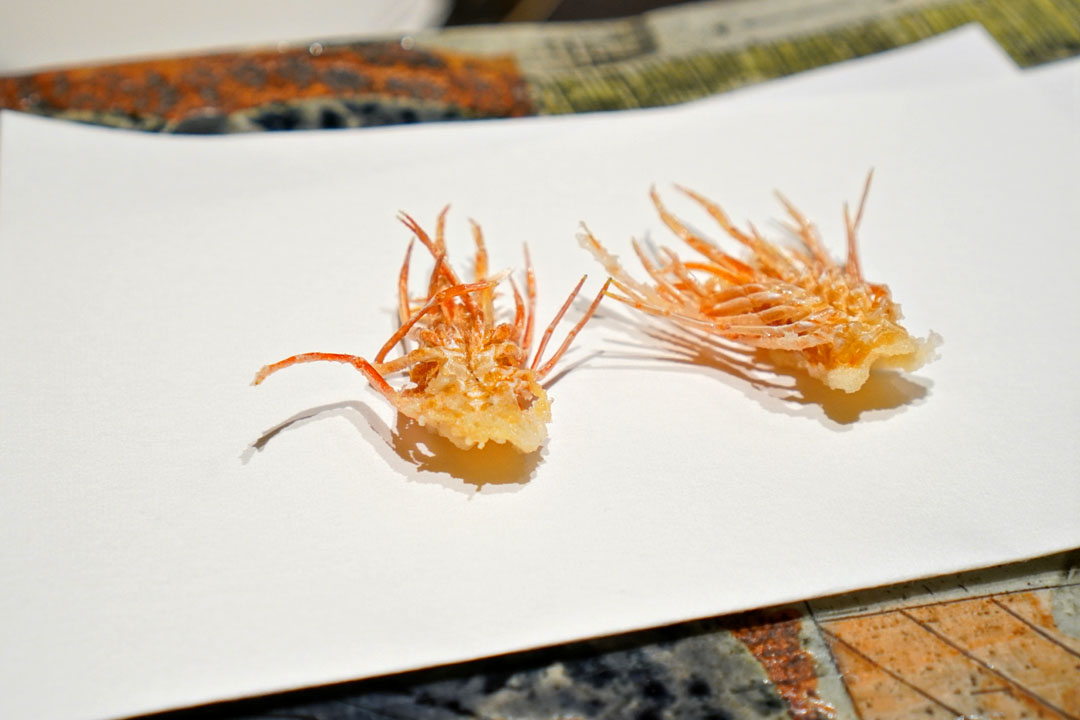
5: 海老の頭 Ebi No Atama 【Seaweed Salt】
Shrimp heads were wonderfully crispy, with a mouthwatering brine that linked up swimmingly with a dab of salt.
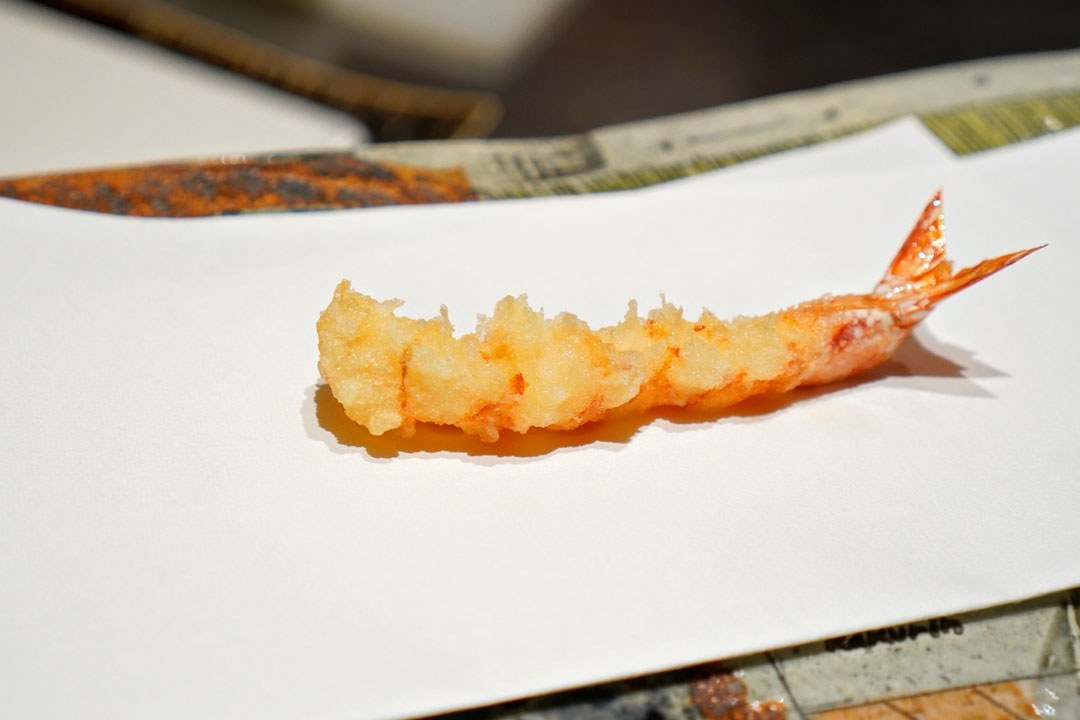
6: 車海老 Kuruma Ebi 【Seaweed Salt and Lemon】
The kuruma shrimp showed off a spot-on snap and sweetness, with said sweetness being drawn out even further by the salt.
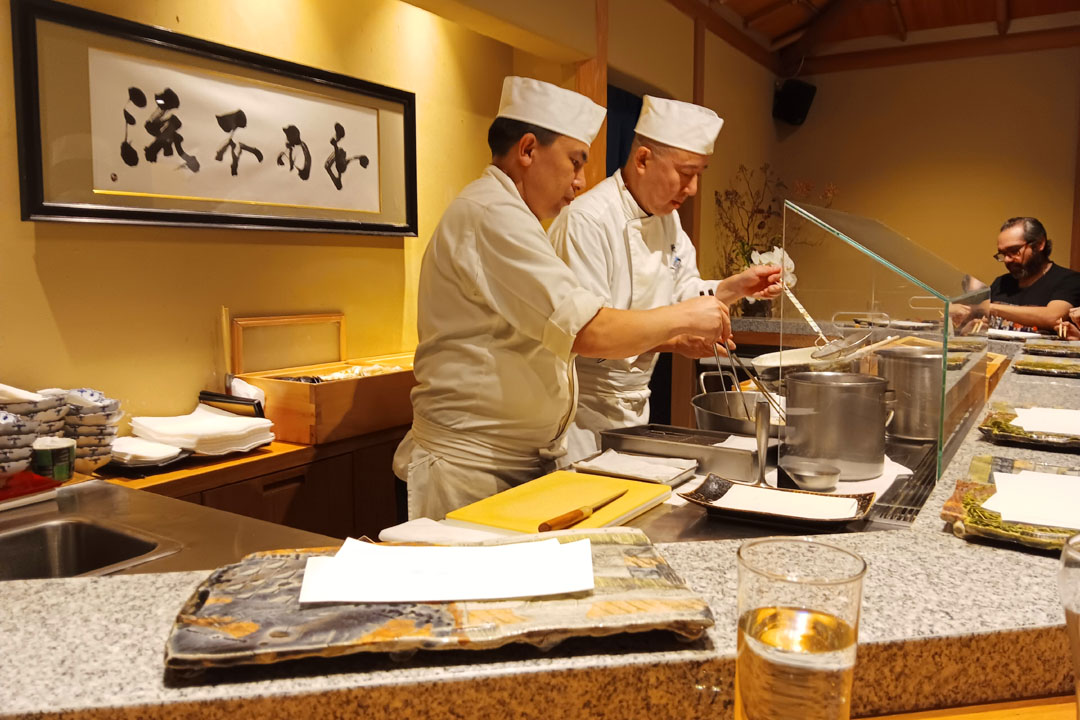
Here we see the chefs at work. That's Koichi Endo on the right, while assisting him was Nima, a native of Nepal who's been at Tempura Matsui since at least the middle of 2016.

7: 車海老 Kuruma Ebi 【Tentsuyu】
A second serving of kuruma prawn was paired with the savory, slightly bitter flavors of the tentsuyu, and the sauce actually seemed to further emphasize the texture of the shrimp.
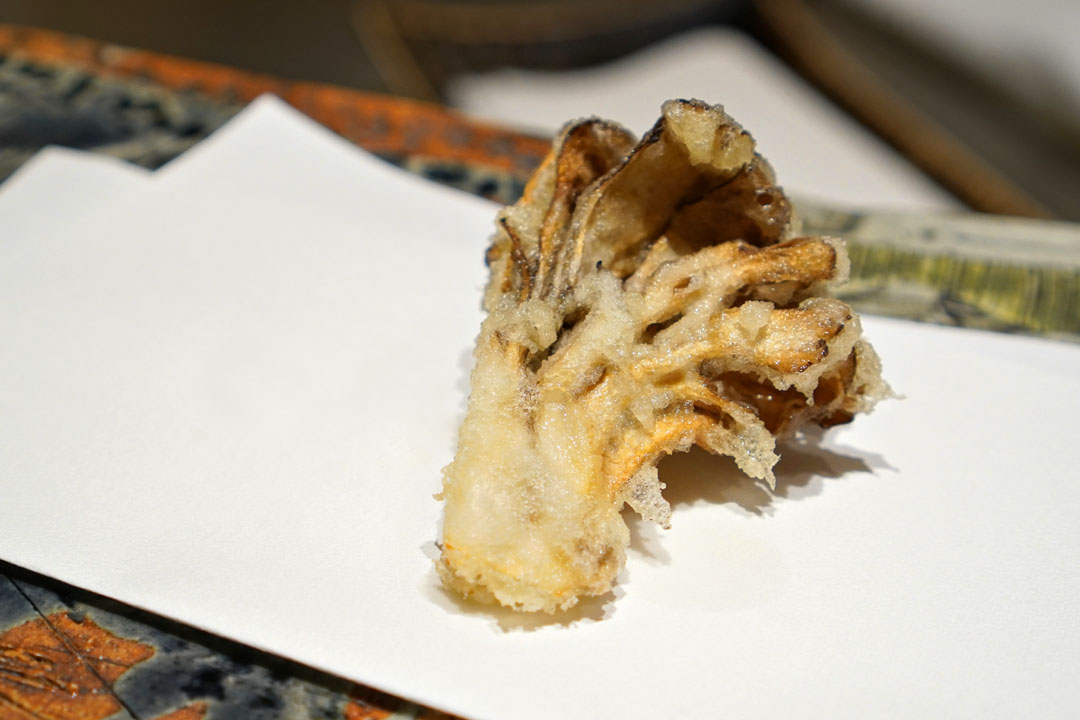
8: 舞茸 Maitake 【Tentsuyu】
Hen-of-the-woods was a joy texturally, its woodsiness melding seamlessly with the tentsuyu's umami notes.
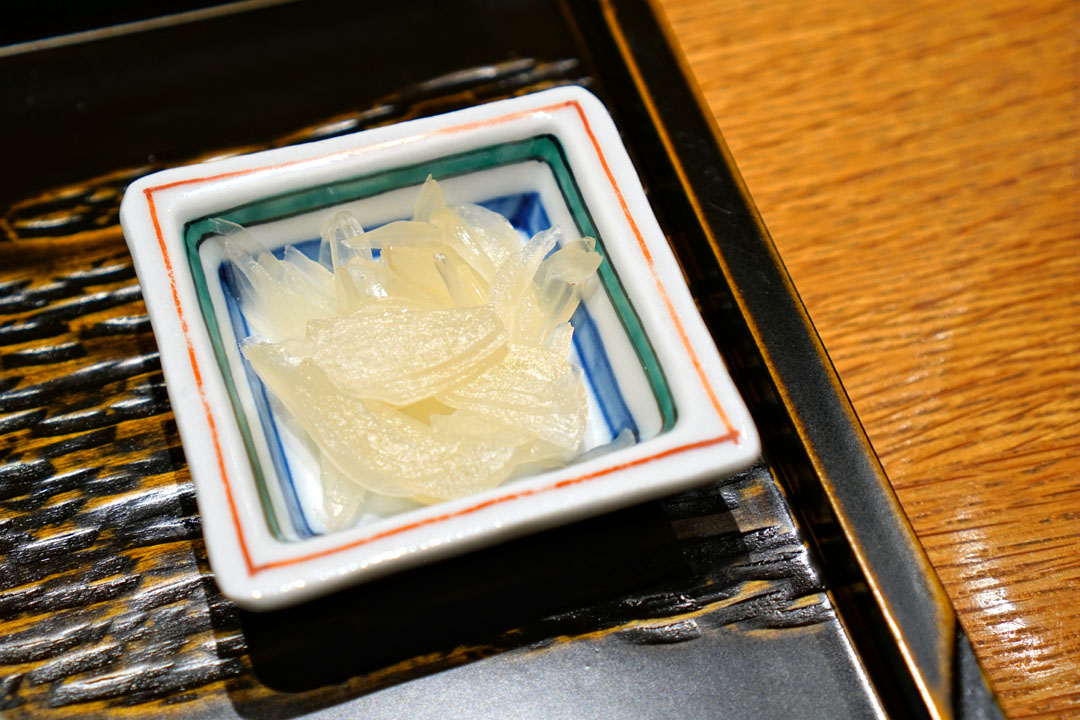
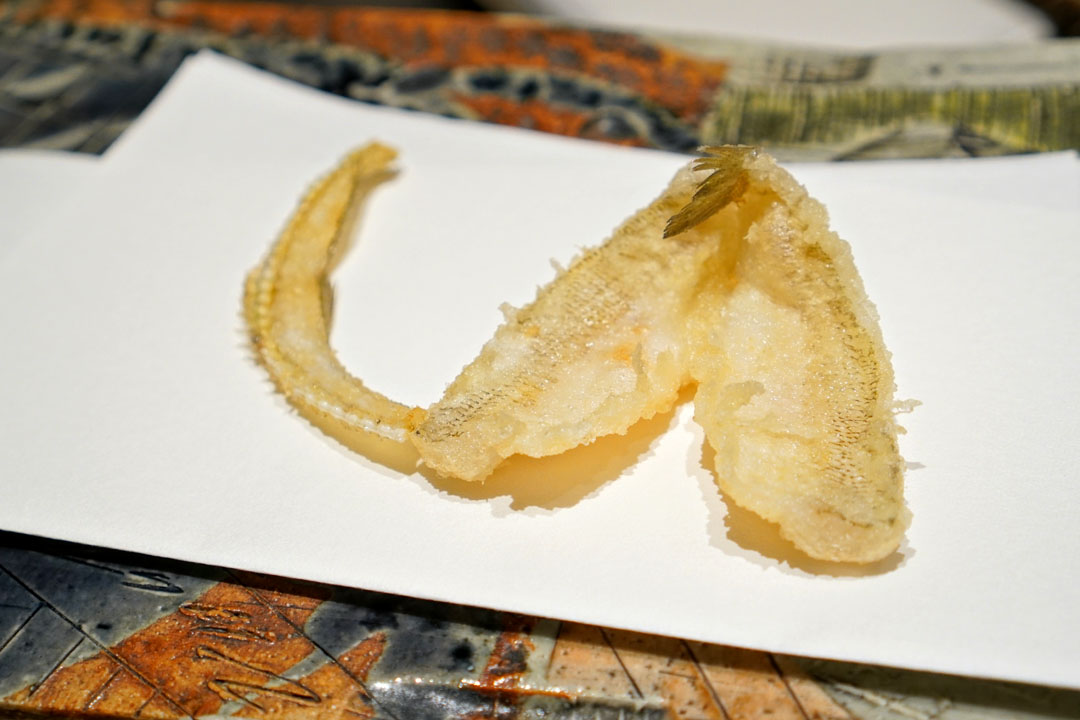
9: キス Kisu 【Seaweed Salt, Tentsuyu】
Japanese whiting was presented in two forms. First was the kisu no hone (キスの骨), a fun, crunchy bone cracker to be eaten with the salt. Meanwhile, the meat of the sillago was delicate both in terms of taste and texture, so the savoriness of the tentsuyu certainly made sense. I was also provided a serving of pickled radish (similar to rakkyo), which had a tartness that seemed to bring out the sweetness of the fish.
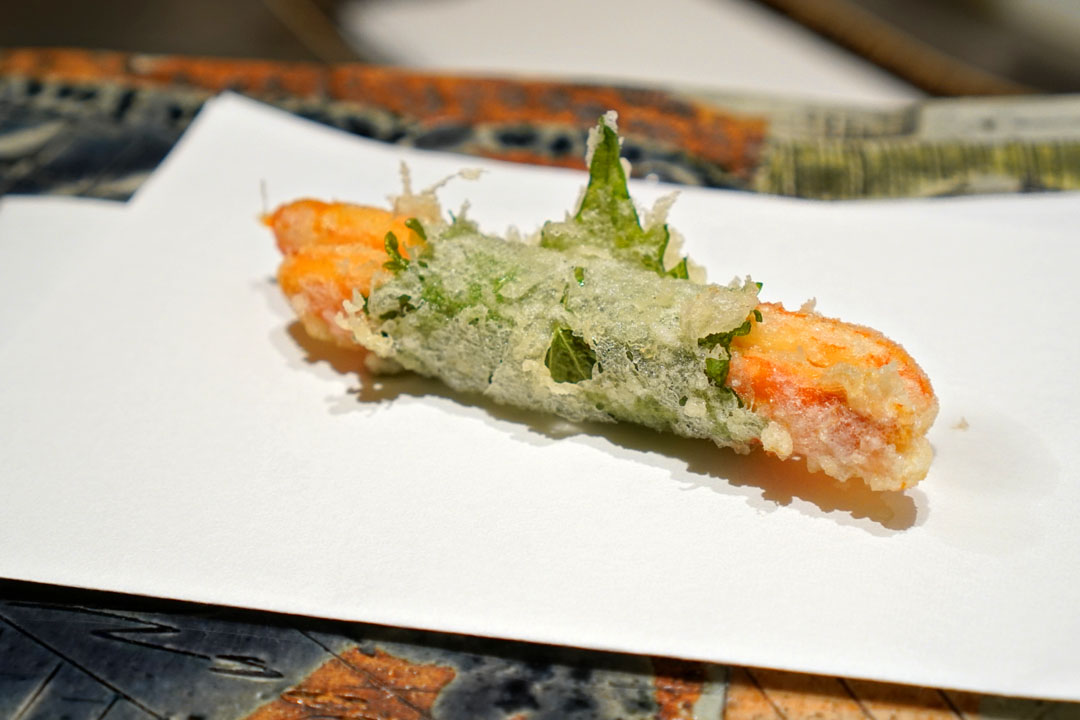
10: ズワイガニ Zuwaigani 【Seaweed Salt and Lemon】
Shiso-wrapped snow crab was superb texturally, while opposing forces of salt and lemon seemed to somehow draw further attention to the crab's natural sweetness.
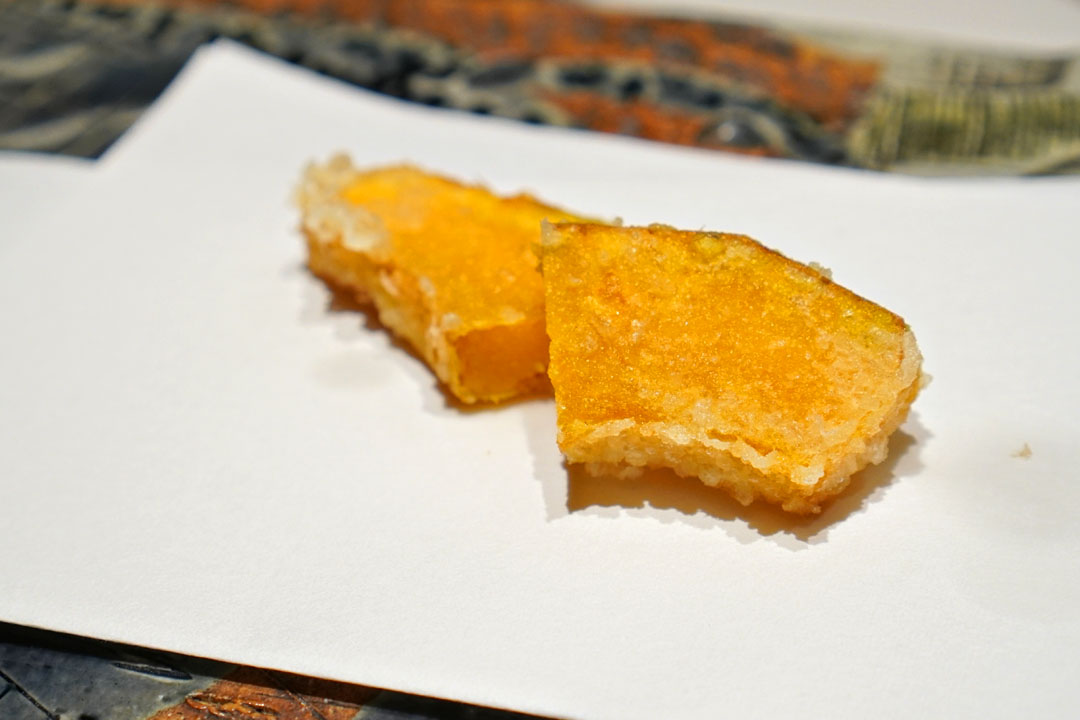
11: カボチャ Kabocha 【Tentsuyu and Seaweed Salt】
The sugariness of kabocha squash was on proud display here, set off by both the tentsuyu and salt.
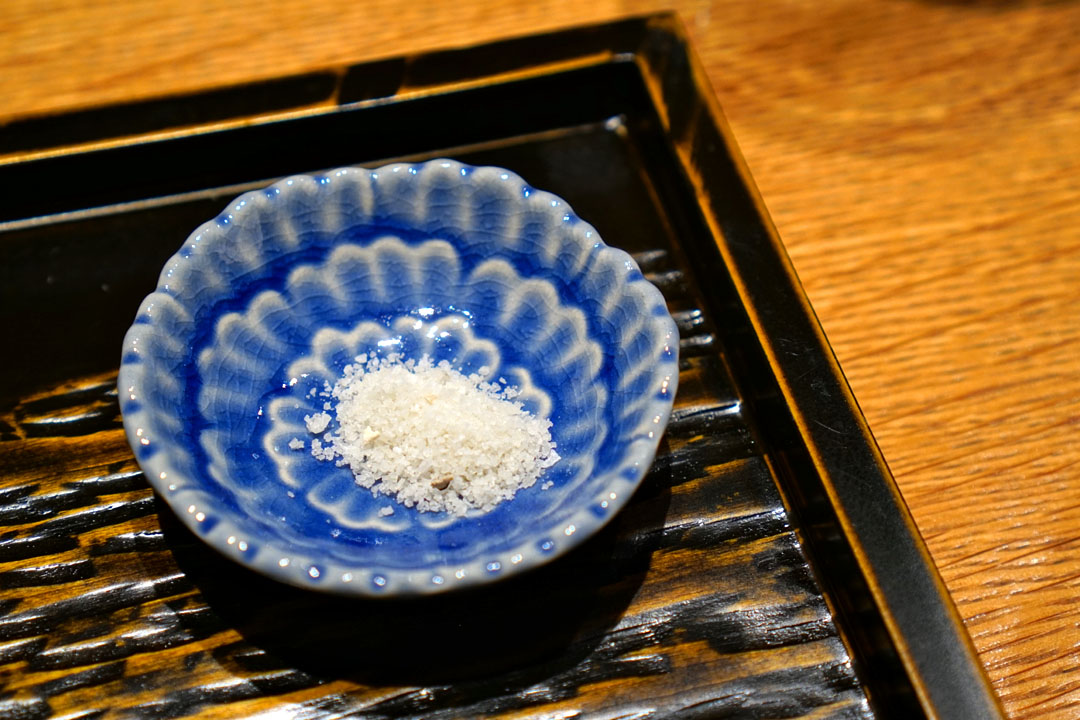
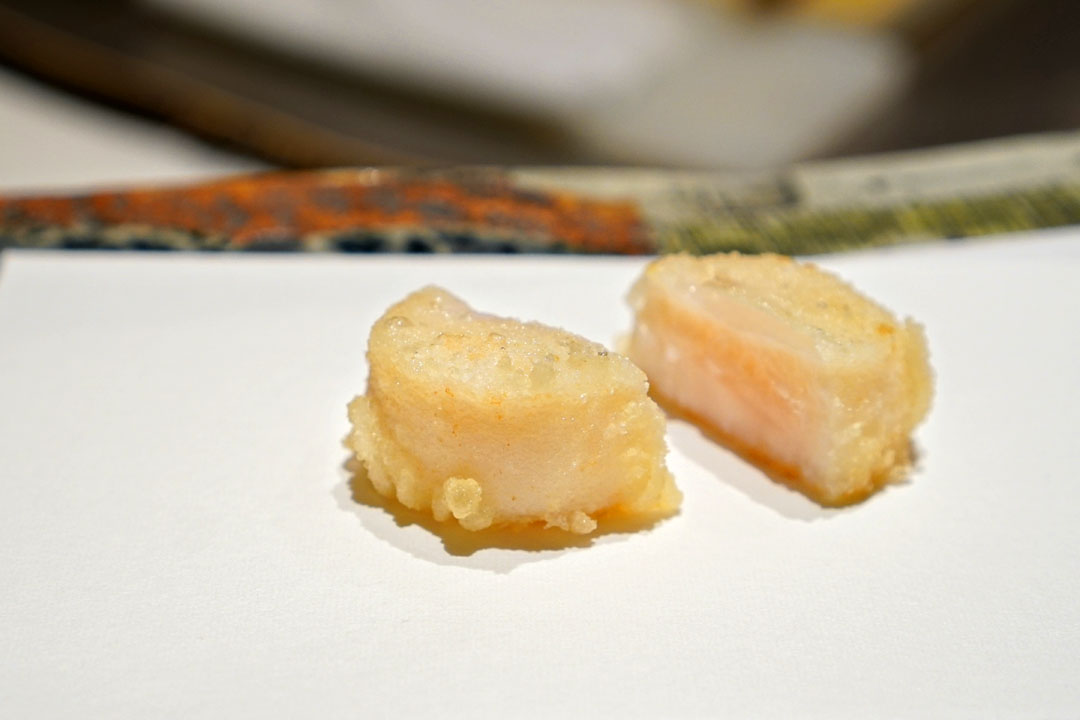
12: ホタテ Hotate 【Truffle Salt and Tentsuyu】
Hokkaido scallop arrived with a truffle-infused salt, which had a marked muskiness that managed to complement without overpowering. I enjoyed the scallop's other half with the tentsuyu, which highlighted both its sweetness and meatiness.
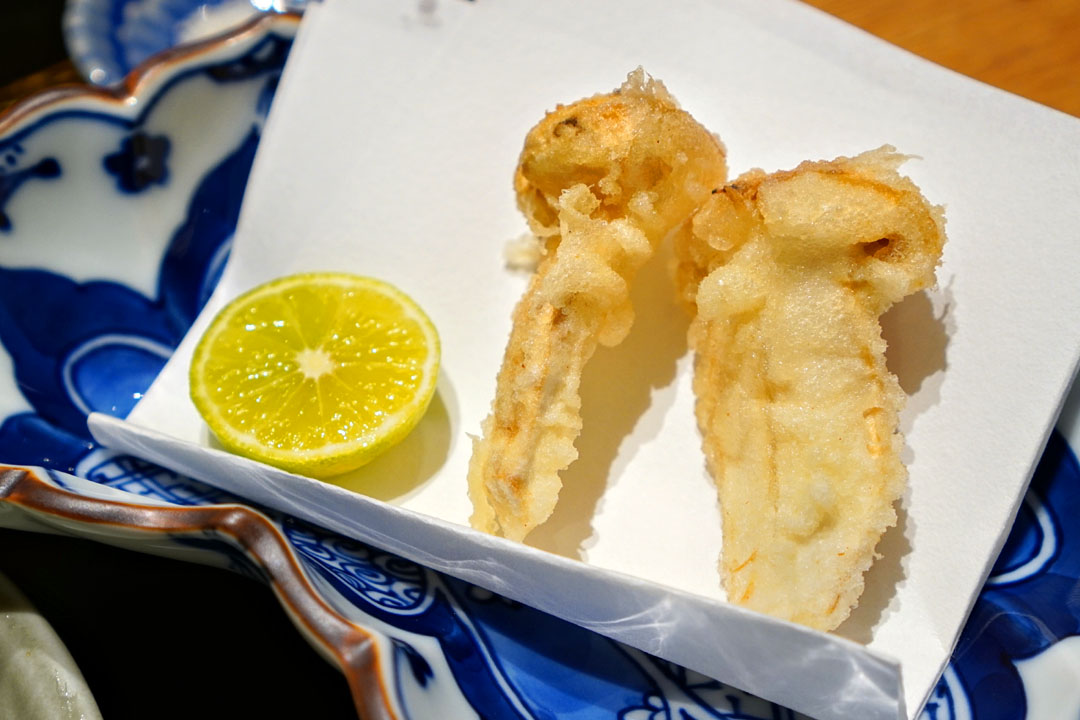
13: 松茸 Matsutake 【Truffle Salt and Seaweed Salt and Sudachi】
Given that we were in the midst of matsutake season, I was hoping to see it on the menu tonight, and I was not disappointed. The mushroom's woodsy spice was well conveyed, as was its satisfyingly chewy consistency. Both the truffle salt and seaweed salt worked with the classic accompaniment of sudachi, but the former stood up better to the citrus.

14: 牡蠣の酒蒸し Kaki No Sakamushi
A homey dish of sake-steamed oyster, wakame, mustard spinach (komatsuna), and yuzukosho served as a bit of a respite from the tempura.

15: 蓮根真丈 Renkon Shinjo 【Tentsuyu and Seaweed Salt and Truffle Salt】
The renkon ebi (蓮根海老) perfectly married the crunch of lotus root with the sweet salinity of shrimp. The "sandwich" melded seamlessly with the tentsuyu, while both salts also worked, though the truffle variety was a bit much in this instance.
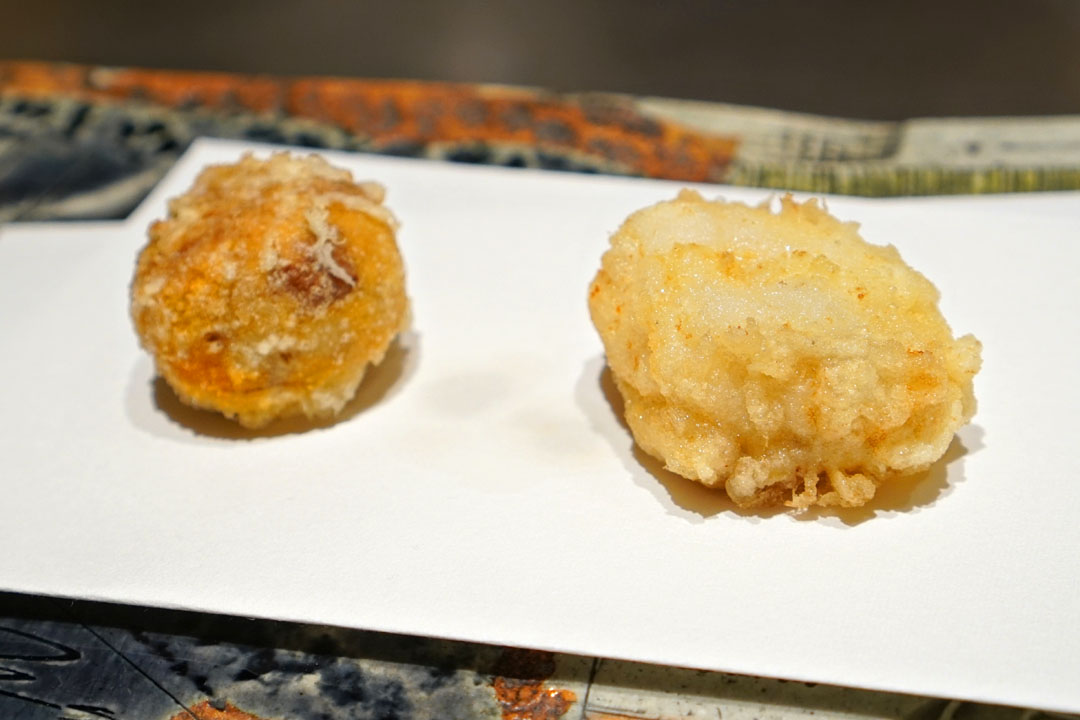
16a: あんこう Anko 【Momiji Oroshi and Tentsuyu】
Monkfish (on the right) ate meaty and mild, and really opened up when taken with the chili-spiked grated daikon that was provided, as flavors were a bit restrained when eaten with the tentsuyu alone.
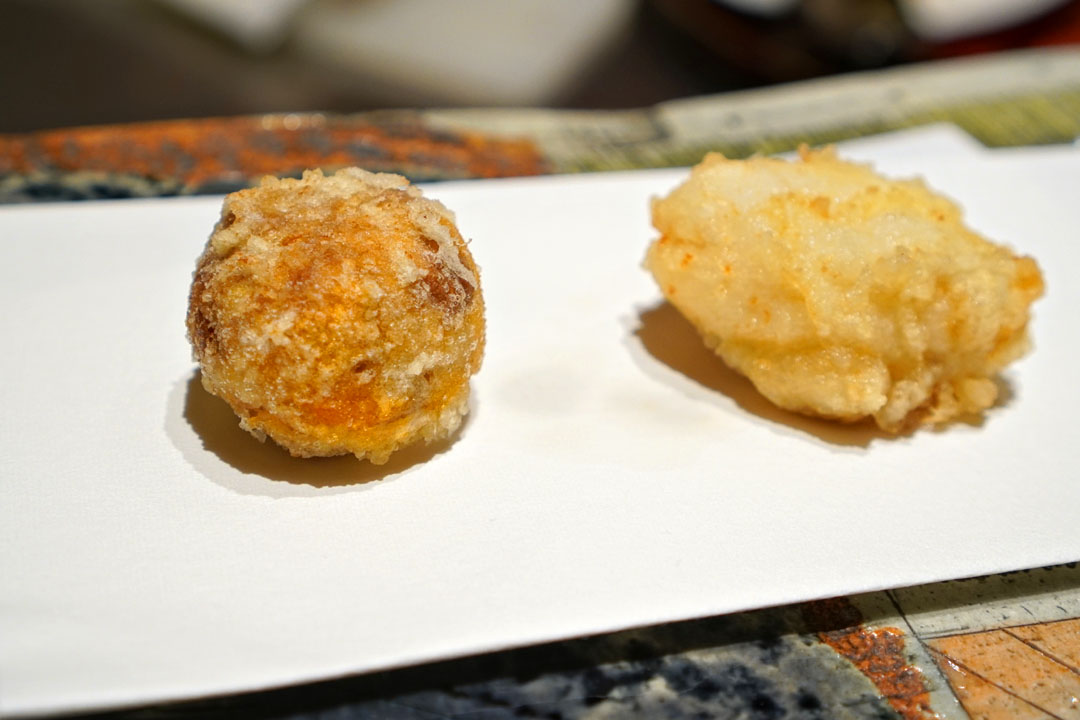
16b: 鮟肝 Ankimo 【Momiji Oroshi and Tentsuyu】
The monkfish liver (on the left) was a definite favorite of mine thanks to its refined combination of earthiness and brine. This one really called for the punchiness of that momiji-oroshi.
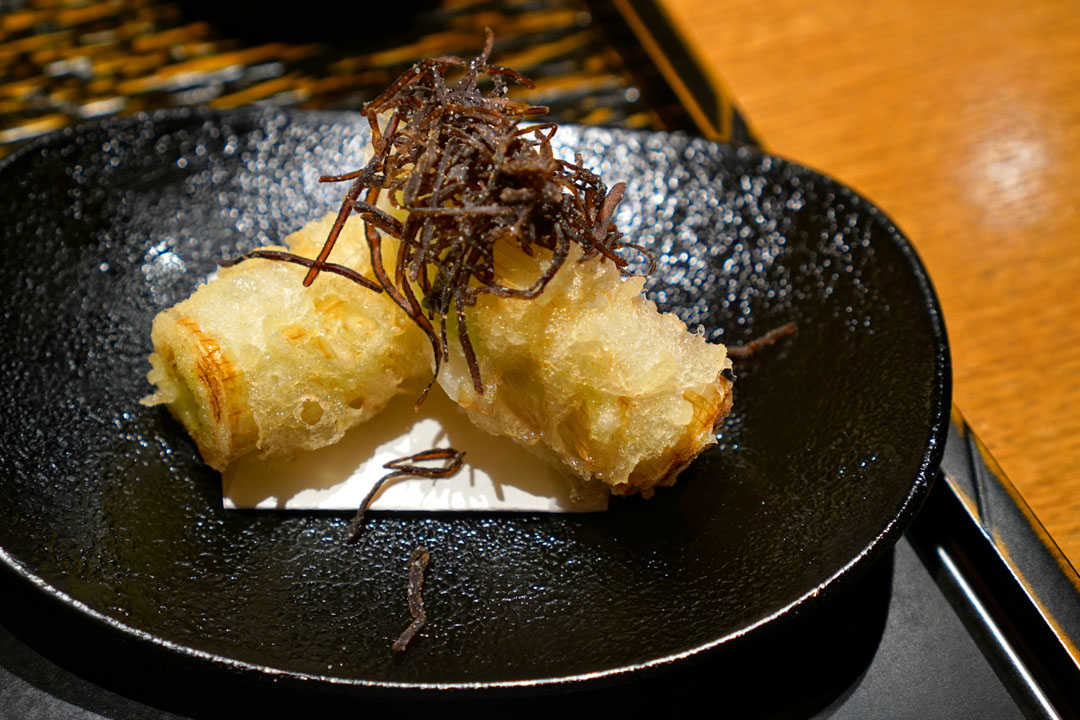
17: 東京ネギ Tokyo Negi
The green onions were another standout, and I loved how their zestiness matched up with the pungency of salted kombu (shio kombu).
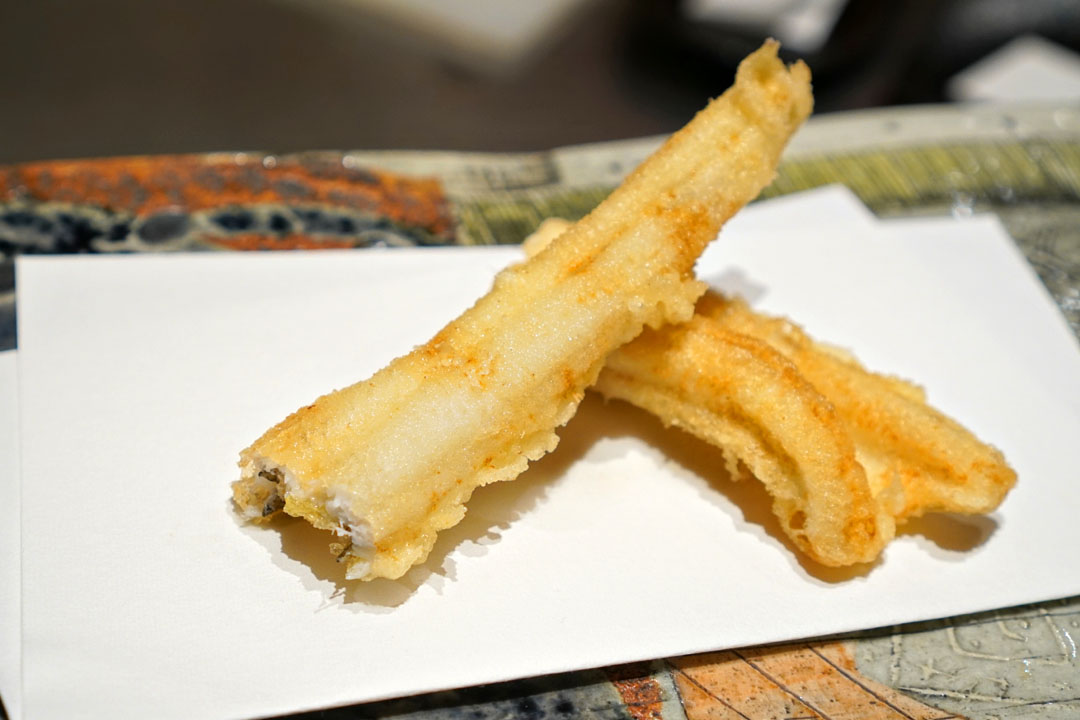
18: 穴子 Anago 【Tentsuyu and Seaweed Salt and Lemon】
The conger eel was a treat, and its mild, sweet salinity was deftly highlighted by the tentsuyu, while the salt and lemon served as more acute accents.
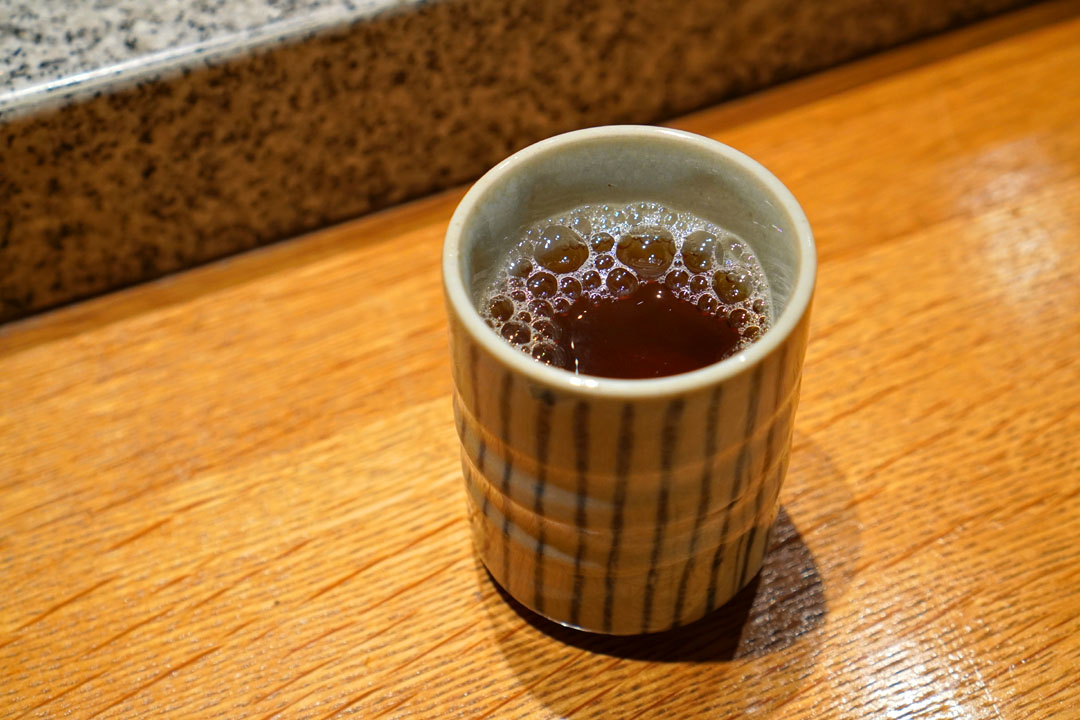
The arrival of a hot, roasty cup of hojicha signaled that dinner was winding down.
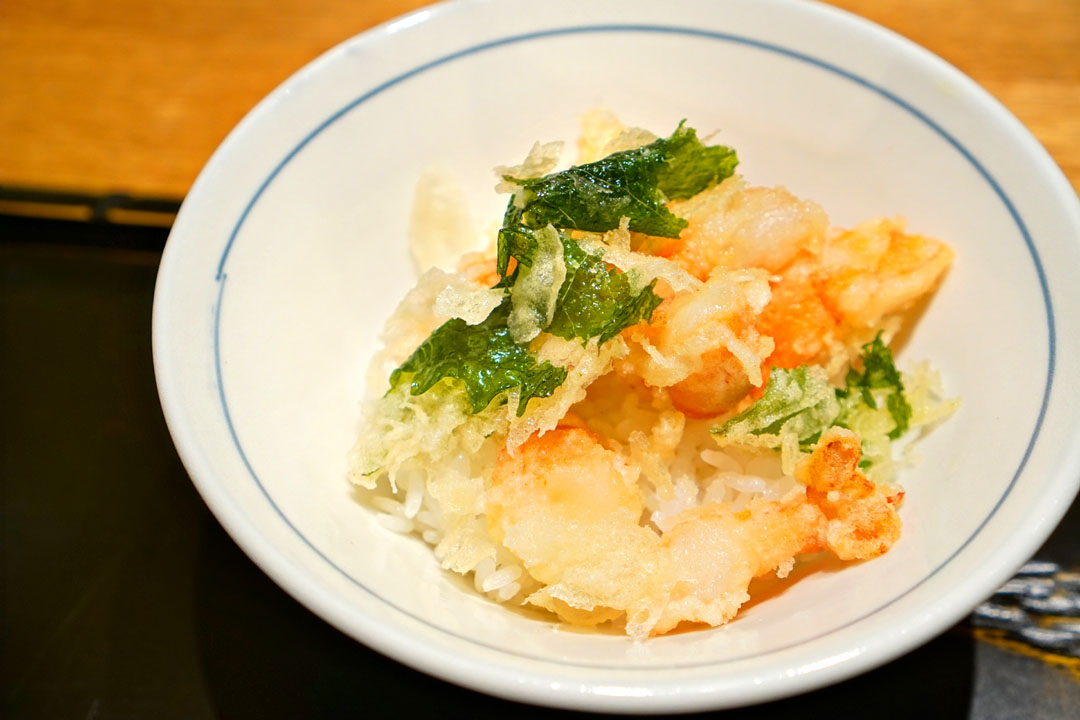
19a: 天ばら Tenbara
My shokuji (食事) course was a winner as well. I was a fan of the rice itself thanks to its texture and "stick," while the tempura'd shrimp was pretty much flawless, and featured a light dusting of truffle salt. I could've easily eaten a much bigger bowl of the stuff.
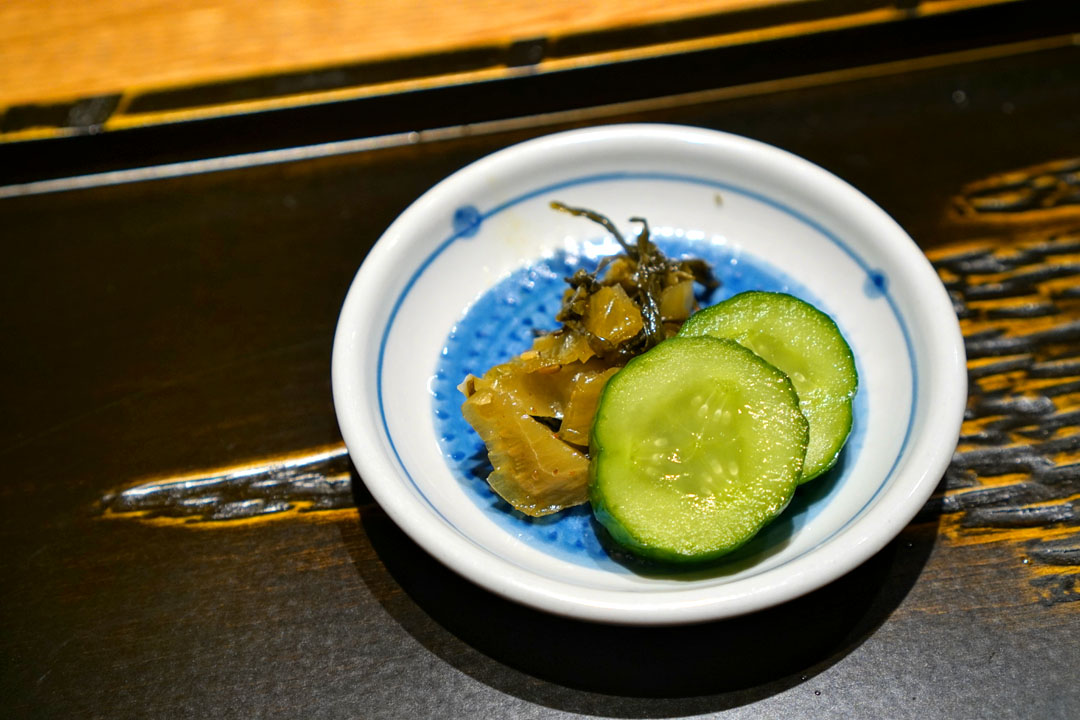
19b: 漬物 Tsukemono
Also appreciated were these pickles, which offered a sharp contrast to the tempura.
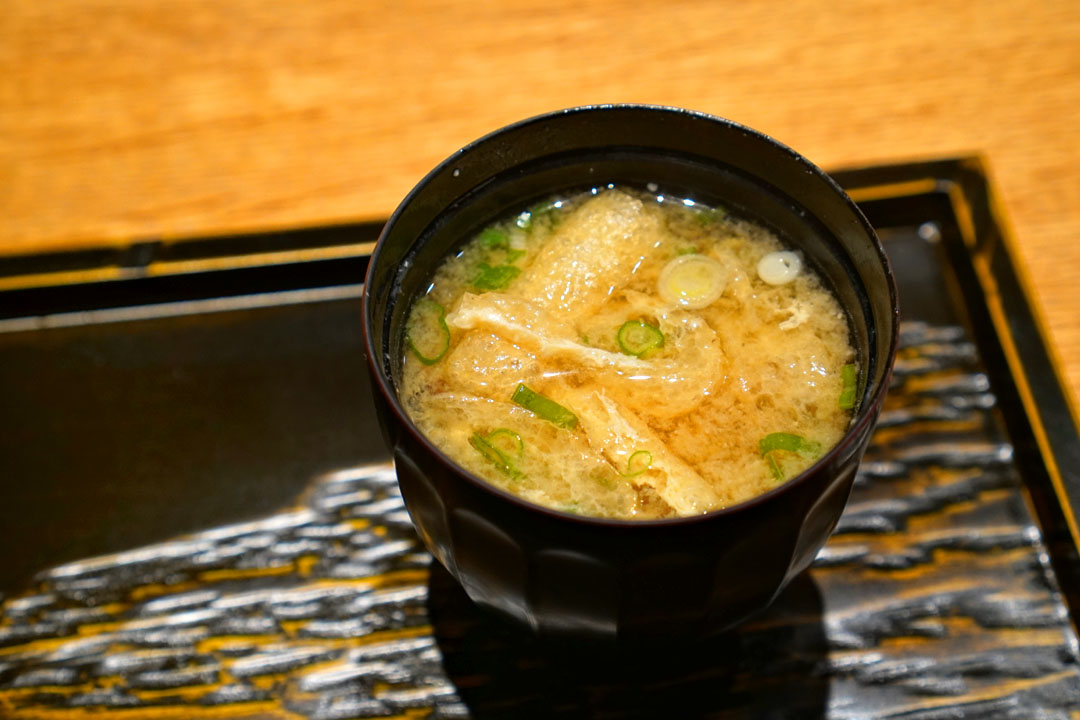
19c: 味噌汁 Misoshiru
The obligatory miso soup stood out due to its more assertive flavors and liberal use of both yuba and negi, along with slick bits of mushroom at the bottom.
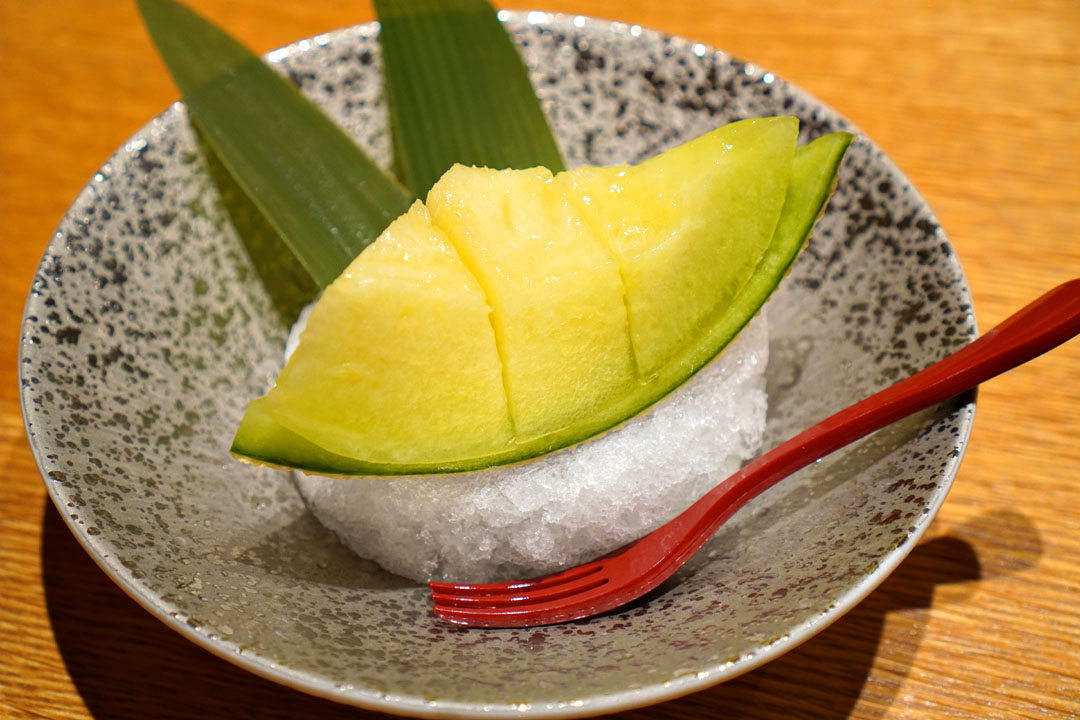
20: マスクメロン Muskmelon
A slice of Japanese melon made for a super sweet, super juicy ending.
Prior to Tempura Matsui, it'd been a long while since I'd had a proper tempura experience, so I quite appreciated tonight's meal. What struck me the most was the delicacy of the batter here, which managed to enhance the intrinsic qualities of the ingredients utilized without getting in the way. I feel that tempura often doesn't receive the respect it deserves (at least here in the States), but a dinner like this just goes to show why the cuisine warrants more attention. As far as I know, there are only two other restaurants like this in the US--the other two being Secchu Yokota (also in NYC) and the aforementioned Tempura Endo--but hopefully that won't remain the case forever.
222 E 39th St, New York, NY 10016
212-986-8885
www.tempuramatsui.com
Thu 10/19/2023, 05:25p-07:30p

I had a stopover in NYC on my way back from my recent visit to England, and thus had time to partake in an early dinner in Manhattan. Given how I often lament the lack of tempura specialist restaurants in the US, I opted to check out Tempura Matsui (天婦羅 まつ井) in Murray Hill. Located on the ground floor of The Nash apartment building, the place opened back in 2015, and is actually the first and only Michelin-starred tempura spot in the country.
A bit of history: The story begins with the restaurant's namesake, Masao Matsui, a veteran tempura chef who got his start in the business in 1968, when he was 18. Throughout his career, he'd run a number of tempura joints in Japan, his most recent post being at the tempura bar at Kioi Nadaman, a restaurant at Hotel New Otani in Tokyo. Given his four decades-plus in the industry, he had hung up his hat, but was lured out of retirement at the age of 65 by Hisami Mitsumori, founder of the Ootoya group, a company that runs hundreds of eateries across Japan and other parts of Asia, and which broke into the American market in 2012.
The Chef was reportedly quite excited about the prospect of being in New York, and thus, Tempura Matsui ended up grand-opening on July 14th, 2015 as the fifth Ootoya outpost in the US, though regrettably, Mitsumori died suddenly shortly after the debut. Just a few weeks later, Matsui was forced to return to Japan due to health reasons, leaving the eatery in the hands of his lieutenant, Shin Kato, another Nadaman alum who'd been cooking since the age of 18. Kato was able to keep things going at a high level, and the restaurant was awarded a Michelin star at the end of September 2015, which has been maintained ever since. Matsui returned to NYC briefly later that year, but his health continued to deteriorate due to cancer, and sadly, he passed away in Japan on February 7th, 2016.
In May 2016, Kiyoshi Chikano was named head chef of Tempura Matsui, a role he ostensibly shared with Kato, though Kato appeared to have decamped just months later. Boasting over 30 years in the biz, Chikano started his career at a sushi-ya in Hokkaido before making his way to Zakuro in Tokyo, where he learned to run a tempura counter. He relocated to the US to work with Matsui, but recently left the restaurant, within the past year or so I believe. The new head chef is Koichi Endo (b. 1970), who, by the way, is not related to the Tempura Endo founder despite their identical names. Endo was also part of the opening team, and was apparently the last person to be trained by Matsui. After a stint at J-Spec Wagyu Dining/Esora Omakase in 2021, he's since returned to take charge here.


Here we see the hallway leading from the entrance, as well as a small bar area, which is apparently used for pre-dinner imbibing.

The restaurant offers two tables for four and one table for two, but you'll want to grab a spot at the nine-seater tempura counter.

Though the restaurant used to offer various levels of omakase and à la carte ordering, that appears to no longer be the case, as the $280 "Matsui Omakase Course" was the only option given to me. Click for a larger version.








Beverage choices include cocktails, sake, shochu, wine, and beer. Click for larger versions.

The place setting was about par for the course.

1: 雲丹シューター Uni Shooter
My first kobachi (小鉢) course brought creamy tongues of Hokkaido sea urchin, paired with lush quail egg and fatty cuts of tuna belly. At the same time, both the wasabi and the bits of yamaimo kept things in check.

2: ゆば Yuba
Tofu skin arrived well-textured, its mild taste meshing easily with the savoriness of salmon roe and the sting of wasabi.

3: 刺身 Sashimi
The requisite sashimi course was up next. I began with the amberjack, a sticky, creamy, subtly-flavored fish that went great with both the wasabi and seaweed. I then moved on to a ruby-hued, classically savory shard of tuna, and ended with a properly fatty cut of toro, which really called for the wasabi.


4: 茶碗蒸し Chawanmushi
For my chawanmushi, I was offered a choice between foie gras or seafood. Though I opted for the former, I actually didn't taste much from the liver. That being said, the dish overall was cozy and apropos for the season, the porcini and snow crab making themselves quite known.

It was now time for the parade of tempura to begin. The various pieces mostly arrived on the plate above, sourced from a producer called Kakurin (カク林製陶所), based out of Toki in Gifu Prefecture.

Accoutrements for my tempura included the compulsory tentsuyu sauce with grated daikon, as well as seaweed salt and lemon. I was instructed to use a particular condiment for each course, which I've noted below in lenticular brackets.

5: 海老の頭 Ebi No Atama 【Seaweed Salt】
Shrimp heads were wonderfully crispy, with a mouthwatering brine that linked up swimmingly with a dab of salt.

6: 車海老 Kuruma Ebi 【Seaweed Salt and Lemon】
The kuruma shrimp showed off a spot-on snap and sweetness, with said sweetness being drawn out even further by the salt.

Here we see the chefs at work. That's Koichi Endo on the right, while assisting him was Nima, a native of Nepal who's been at Tempura Matsui since at least the middle of 2016.

7: 車海老 Kuruma Ebi 【Tentsuyu】
A second serving of kuruma prawn was paired with the savory, slightly bitter flavors of the tentsuyu, and the sauce actually seemed to further emphasize the texture of the shrimp.

8: 舞茸 Maitake 【Tentsuyu】
Hen-of-the-woods was a joy texturally, its woodsiness melding seamlessly with the tentsuyu's umami notes.


9: キス Kisu 【Seaweed Salt, Tentsuyu】
Japanese whiting was presented in two forms. First was the kisu no hone (キスの骨), a fun, crunchy bone cracker to be eaten with the salt. Meanwhile, the meat of the sillago was delicate both in terms of taste and texture, so the savoriness of the tentsuyu certainly made sense. I was also provided a serving of pickled radish (similar to rakkyo), which had a tartness that seemed to bring out the sweetness of the fish.

10: ズワイガニ Zuwaigani 【Seaweed Salt and Lemon】
Shiso-wrapped snow crab was superb texturally, while opposing forces of salt and lemon seemed to somehow draw further attention to the crab's natural sweetness.

11: カボチャ Kabocha 【Tentsuyu and Seaweed Salt】
The sugariness of kabocha squash was on proud display here, set off by both the tentsuyu and salt.


12: ホタテ Hotate 【Truffle Salt and Tentsuyu】
Hokkaido scallop arrived with a truffle-infused salt, which had a marked muskiness that managed to complement without overpowering. I enjoyed the scallop's other half with the tentsuyu, which highlighted both its sweetness and meatiness.

13: 松茸 Matsutake 【Truffle Salt and Seaweed Salt and Sudachi】
Given that we were in the midst of matsutake season, I was hoping to see it on the menu tonight, and I was not disappointed. The mushroom's woodsy spice was well conveyed, as was its satisfyingly chewy consistency. Both the truffle salt and seaweed salt worked with the classic accompaniment of sudachi, but the former stood up better to the citrus.

14: 牡蠣の酒蒸し Kaki No Sakamushi
A homey dish of sake-steamed oyster, wakame, mustard spinach (komatsuna), and yuzukosho served as a bit of a respite from the tempura.

15: 蓮根真丈 Renkon Shinjo 【Tentsuyu and Seaweed Salt and Truffle Salt】
The renkon ebi (蓮根海老) perfectly married the crunch of lotus root with the sweet salinity of shrimp. The "sandwich" melded seamlessly with the tentsuyu, while both salts also worked, though the truffle variety was a bit much in this instance.

16a: あんこう Anko 【Momiji Oroshi and Tentsuyu】
Monkfish (on the right) ate meaty and mild, and really opened up when taken with the chili-spiked grated daikon that was provided, as flavors were a bit restrained when eaten with the tentsuyu alone.

16b: 鮟肝 Ankimo 【Momiji Oroshi and Tentsuyu】
The monkfish liver (on the left) was a definite favorite of mine thanks to its refined combination of earthiness and brine. This one really called for the punchiness of that momiji-oroshi.

17: 東京ネギ Tokyo Negi
The green onions were another standout, and I loved how their zestiness matched up with the pungency of salted kombu (shio kombu).

18: 穴子 Anago 【Tentsuyu and Seaweed Salt and Lemon】
The conger eel was a treat, and its mild, sweet salinity was deftly highlighted by the tentsuyu, while the salt and lemon served as more acute accents.

The arrival of a hot, roasty cup of hojicha signaled that dinner was winding down.

19a: 天ばら Tenbara
My shokuji (食事) course was a winner as well. I was a fan of the rice itself thanks to its texture and "stick," while the tempura'd shrimp was pretty much flawless, and featured a light dusting of truffle salt. I could've easily eaten a much bigger bowl of the stuff.

19b: 漬物 Tsukemono
Also appreciated were these pickles, which offered a sharp contrast to the tempura.

19c: 味噌汁 Misoshiru
The obligatory miso soup stood out due to its more assertive flavors and liberal use of both yuba and negi, along with slick bits of mushroom at the bottom.

20: マスクメロン Muskmelon
A slice of Japanese melon made for a super sweet, super juicy ending.
Prior to Tempura Matsui, it'd been a long while since I'd had a proper tempura experience, so I quite appreciated tonight's meal. What struck me the most was the delicacy of the batter here, which managed to enhance the intrinsic qualities of the ingredients utilized without getting in the way. I feel that tempura often doesn't receive the respect it deserves (at least here in the States), but a dinner like this just goes to show why the cuisine warrants more attention. As far as I know, there are only two other restaurants like this in the US--the other two being Secchu Yokota (also in NYC) and the aforementioned Tempura Endo--but hopefully that won't remain the case forever.
0 Comments:
Post a Comment
Subscribe to Post Comments [Atom]
<< Home